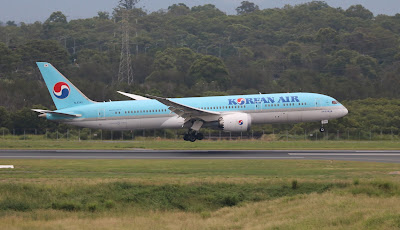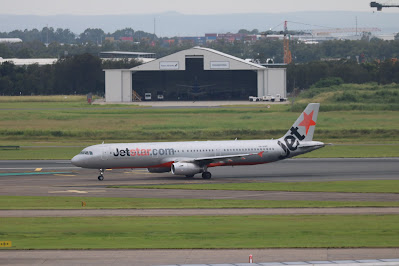10. Gustaf III Airport – San Bartolomé (SBH/TFFJ)
Year of construction: 1984
Risk factors: Short runway, near the beach.
This airport’s strange feature is that it only provides its services from 8:00 a.m. to 6:00 p.m. In addition, it can only be used by small airplanes of no more than 20 passengers, since its location would considerably complicate the take-off and landing of larger aircrafts.
The track, only 2,133 feet long, is located between a hill and a beach. This means that pilots must be very careful when they maneuver. And tourists on the beach should also be careful; there are even signs that warn them not to sunbathe near the base of the track.
9. Gibraltar Airport – United Kingdom (GIB/LXGB)
Year of construction: 1939
Risk factors: Track intersects the road.
Gibraltar Airport is considered the most dangerous in Europe after Madeira. The reason? It is the only one in the world whose runway meets the road, and at the same level! This is because the airport made maximum use of its minimal space.
So, when a plane is close, highway traffic stops to give way to the aircraft. This means that any traffic accident could affect the takeoff or landing of the planes. At this airport, what was saved in space is lost in security.
8. Juancho E. Yrausquin Airport – Saba Island (SAB/TNCS)
Year of construction: 1963
Risk factors: Shortest runway in the world.
This airport is known as the most dangerous in existence, since it has the shortest runway in the world. It’s just 1,300 feet! In addition to the fact that its length makes takeoff and landing very difficult, the airport is located on the edge of a cliff.
This means that any mistake in the calculations could easily lead an aircraft into the sea or onto the rocks below the cliff. For this reason, jets cannot take off or land at this airport. Propeller planes, on the other hand, can make use of the facilities without major problems.
7. Congonhas Airport – São Paulo, Brazil (CGH/SBSP)
Year of construction: 1936
Risk factors: Closeness of the airplanes.
The main problem with the Congonhas airport is that being as it’s located in a residential area in the center of São Paulo, it is surrounded by buildings. This causes pilots to have to be particularly careful when maneuvering during takeoff and landing.
As if that were not enough, its track is considered one of the slipperiest in existence, due to the inefficient drainage systems in the area. Unfortunately, this airport has seen several accidents. One of them occurred in 2007, and it caused the authorities to decide to expan
6. Cristiano Ronaldo Airport – Madeira, Portugal (FNC/LPMA)
Year of construction: 1973
Risk factors: Track built on the sea.
Some describe Cristiano Ronaldo Airport as an engineering marvel. For others, it is a danger. The island of Madeira is so small that the runway of his airport had to be expanded over the sea. For this expansion, 180 pillars were built that hold the track over the water.
The strong winds on the island, as well as the narrow airstrip, make the maneuvers that the pilots carry out very complex. In fact, all those in charge of taking off or landing a plane on the island of Madeira must receive special training.
5. Kai Tak Airport – Hong Kong (
Year of construction: 1925
Risk factors: Surrounded by buildings.
Landing at Kai Tak Airport was challenging even for skilled pilots. The airport was surrounded by tall buildings, and airplanes passed so close to the buildings that passengers felt they could peek into the offices. To make matters worse, the track was built on the sea, and it was far too narrow and short.
It is not difficult to imagine why passengers referred to this airport as “Heart Attack Airport.” Kai Tak was the site of no less than fifteen accidents before it was shut down in 1998 because of how dangerous it was.
4. Male Airport – Maldives (MLE/VRMM)
Year of construction: 1960
Risk factors: Runway size.
The Maldives Islands airport is located on the island of Hulhule. Its main problem is the size of its runway, which is so small that it occupies the entire length of the island. Any miscalculation can easily lead the plane to the sea.
Another unusual feature of this busy airport is that, once its planes manage to land, passengers usually have to take speedboats to get to where they are going in the Maldives. Otherwise, they’ll be stuck waiting for hours.
3. Princess Juliana Airport – Saint Martin (SXM/TNCM)
Year of construction: 1942
Risk factors: Closeness of airplanes.
This busy airport has a strange feature, where its planes fly barely 82 feet above the beach. In fact, the aircraft passes so close to the ground that the local government has warned tourists to stay at a safe distance during take-off and landing.
This is due to the possibility of a too-close sightseer being thrown into the sea or sucked into a turbine. During its years of operation, this airport has been the site of four accidents that have had devastating consequences.
2. Barra Airport – Scotland (BRR/EGPR)
Year of construction: 1936
Risk factors: Track on the beach.
This airport, which is located north of the island of Barra, is the only one in the world where takeoffs and landings take place on the beach. This, first of all, means that all air operations are easily affected by the tide.
The beach that serves as the airstrip is open to the public, so people should check if the airport is in operation before visiting. The beach at this airport is also often visited by seals, and the airport staff frequently have to escort the seals back to the sea to avoid accidents.
1. Courchevel Airport – France (CVF/LFLJ)
Year of construction: 1962
Risk factors: Location of runway.
This airport, located in the middle of the French Alps, is used to access the Courchevel ski resort. It is located 6,588 feet above sea level, and its runway measures just 1,761 feet. This short runway prevents pilots from last-minute, necessary maneuvering.
Furthermore, Courchevel airport has no lighting, which makes landing considerably difficult on foggy, rainy, or snowy days. To make matters worse, it is built between the snowy mountains, which causes a problem for planes trying to approach and descend.




















































